
Haworth is a borough in Bergen County, in the U.S. state of New Jersey. As of the 2020 United States census, the borough's population was 3,343, a decrease of 39 (−1.2%) from the 2010 census count of 3,382, which in turn reflected a decline of 8 (−0.2%) from the 3,390 counted in the 2000 census.

The Little Shop of Horrors is a 1960 American horror comedy film directed by Roger Corman. Written by Charles B. Griffith, the film is a farce about a florist's assistant who cultivates a plant that feeds on human blood. The film stars Jonathan Haze, Jackie Joseph, Mel Welles, and Dick Miller, who had all worked for Corman on previous films. Produced under the title The Passionate People Eater, the film employs an original style of humor, combining dark comedy with farce and incorporating Jewish humor and elements of spoof. The Little Shop of Horrors was shot on a budget of $28,000. Interiors were shot in two days, by utilizing sets that had been left standing from A Bucket of Blood.

Norma Marie Talmadge was an American actress and film producer of the silent era. A major box-office draw for more than a decade, her career reached a peak in the early 1920s, when she ranked among the most popular idols of the American screen.

Jackie Joseph is an American actress and writer. She is best known for her role as Jackie Parker on The Doris Day Show (1971–1973) and Audrey in The Little Shop of Horrors (1960), as well as a supporting role in Gremlins (1984).

Margaret Lindsay was an American film actress. Her time as a Warner Bros. contract player during the 1930s was particularly productive. She was noted for her supporting work in successful films of the 1930s and 1940s such as Baby Face, Jezebel (1938) and Scarlet Street (1945) and her leading roles in lower-budgeted B movie films such as the Ellery Queen series at Columbia in the early 1940s. Critics regard her portrayal of Nathaniel Hawthorne's Hepzibah Pyncheon in the 1940 film The House of the Seven Gables as Lindsay's standout career role.
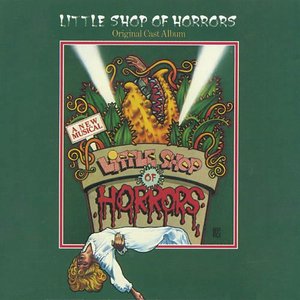
Little Shop of Horrors is a horror comedy rock musical with music by Alan Menken and lyrics and a book by Howard Ashman. The story follows a hapless florist shop worker who raises a plant that feeds on human blood and flesh. The musical is loosely based on the low-budget 1960 black comedy film The Little Shop of Horrors. The music, composed by Menken in the style of early 1960s rock and roll, doo-wop and early Motown, includes several well-known tunes, including the title song, "Skid Row (Downtown)", "Somewhere That's Green", and "Suddenly, Seymour".

Little Shop of Horrors is a 1986 American horror comedy musical film directed by Frank Oz. It is an adaptation of the 1982 off-Broadway musical of the same name by composer Alan Menken and writer Howard Ashman, which is itself an adaptation of the 1960 film The Little Shop of Horrors by director Roger Corman. The film, which centers on a floral shop worker who discovers a sentient carnivorous plant that feeds on human blood, stars Rick Moranis, Ellen Greene, Vincent Gardenia, Steve Martin, and the voice of Levi Stubbs. The film also features special appearances by Jim Belushi, John Candy, Christopher Guest, and Bill Murray. It was produced by David Geffen through The Geffen Company and released by Warner Bros. on December 19, 1986.

Helen Mack was an American actress. She started her career as a child actress in silent films, moving to Broadway plays and touring one of the vaudeville circuits. Her greater success as an actress was as a leading lady in the 1930s. She made the transition to performing on radio and then into writing, directing, and producing shows during the Golden Age of Radio. She later wrote for Broadway, stage and television. Her career spanned the infancy of the motion picture industry, the beginnings of Broadway, the final days of vaudeville, the transition to sound movies, the Golden Age of Radio, and the rise of television.

A Bucket of Blood is a 1959 American comedy horror film directed by Roger Corman. It starred Dick Miller and was set in the West Coast beatnik culture of the late 1950s. The film, produced on a $50,000 budget, was shot in five days and shares many of the low-budget filmmaking aesthetics commonly associated with Corman's work. Written by Charles B. Griffith, the film is a dark comic satire about a dimwitted, impressionable young busboy at a Bohemian café who is acclaimed as a brilliant sculptor when he accidentally kills his landlady's cat and covers its body in clay to hide the evidence. When he is pressured to create similar work, he becomes a serial murderer.
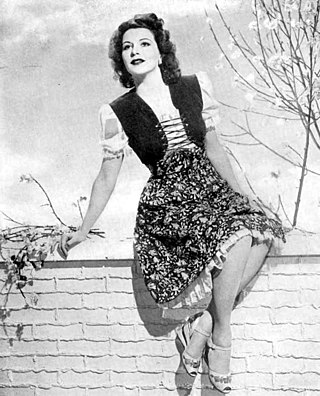
Julie Bishop, previously known as Jacqueline Wells, was an American film and television actress. She appeared in more than 80 films between 1923 and 1957.

Charles Byron Griffith was an American screenwriter, actor, and film director. He was the son of Donna Dameral, radio star of Myrt and Marge, along with Charles' grandmother, Myrtle Vail, and was best known for writing Roger Corman productions such as A Bucket of Blood (1959), The Little Shop of Horrors (1960), and Death Race 2000 (1975).
Hollywood on Parade (1932–1934) is a series of short subjects released by Paramount Pictures.

Vinton Hayworth, also known as Jack Arnold and Vincent Haworth, was an American actor, playwright and screenwriter who began in weaselly and milquetoast roles and aged into dignified character parts. He appeared in over 90 films during his career, as well as on numerous television shows. Later audiences will recognize him from his final role as General Winfield Schaeffer in the fourth and fifth seasons of the sitcom I Dream of Jeannie. He was the uncle of Rita Hayworth, as well as being the uncle of Ginger Rogers.
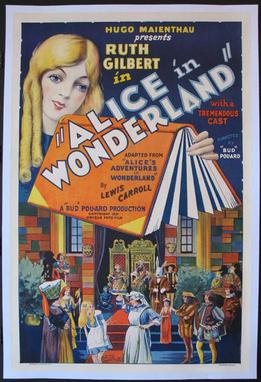
Alice in Wonderland (1931) is an independently made black-and-white Pre-Code American film based on Lewis Carroll's 1865 novel Alice's Adventures in Wonderland, directed by Bud Pollard, produced by Hugo Maienthau, and filmed at Metropolitan Studios in Fort Lee, New Jersey.

Myrt and Marge is a 1933 American pre-Code Universal Studios feature film, starring Myrtle Vail and Donna Damerel. The film is noteworthy today because it co-stars Ted Healy and his Stooges, shortly before the trio split from him and became the Three Stooges. The team included Bonnie Bonnell, who was a short-lived female Stooge.

Dr. Heckyl and Mr. Hype is a 1980 American comedy-drama horror romance film directed by Charles B. Griffith, starring Oliver Reed and Sunny Johnson.

Myrt and Marge is an American radio serial which aired from November 2, 1931 to March 27, 1942 on CBS Radio and the Mutual Broadcasting System. It was created and written by its main star, actress Myrtle Vail.
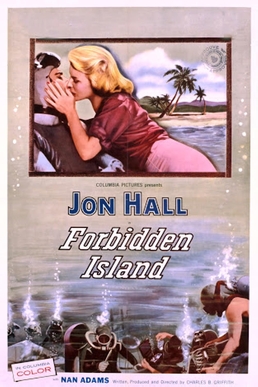
Forbidden Island is a 1959 American adventure crime film directed by Charles B. Griffith starring Jon Hall. It was his debut as director, although he had directed second unit on Attack of the Crab Monsters. A young Don Preston from the Mothers of Invention appeared in this film.
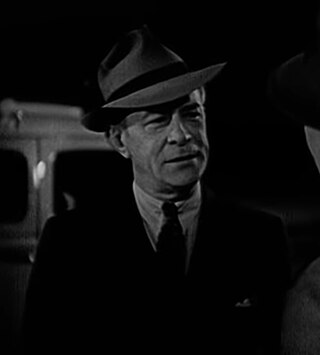
Thomas E. Jackson was an American stage and screen actor. His 67-year career spanned eight decades and two centuries, during which time he appeared in over a dozen Broadway plays, produced two others, acted in over a 130 films, as well as numerous television shows. He was most frequently credited as Thomas Jackson and occasionally as Tom Jackson or Tommy Jackson.

Donna Damerel was an American actress.

















